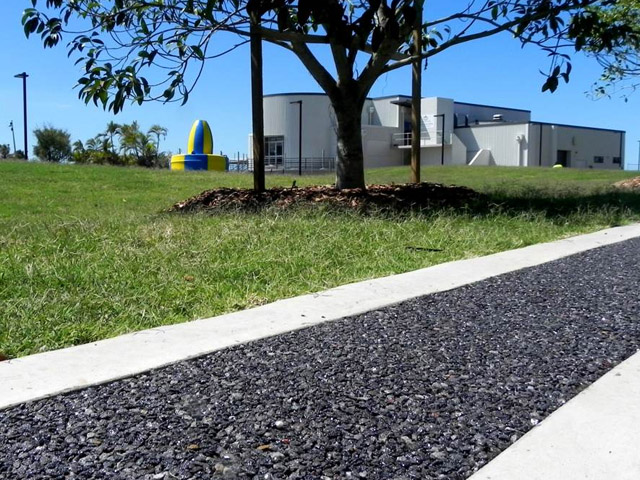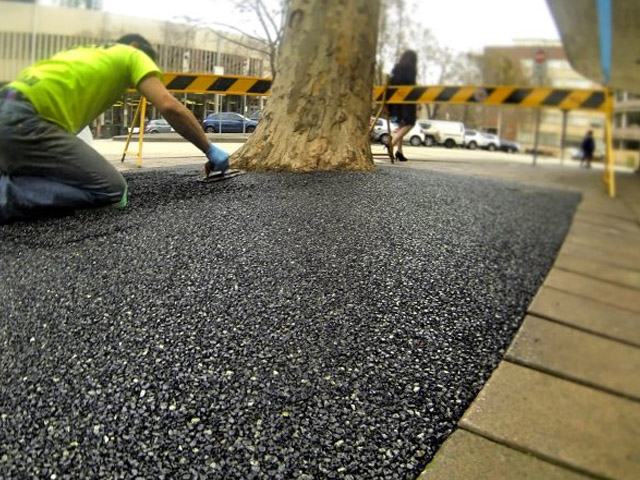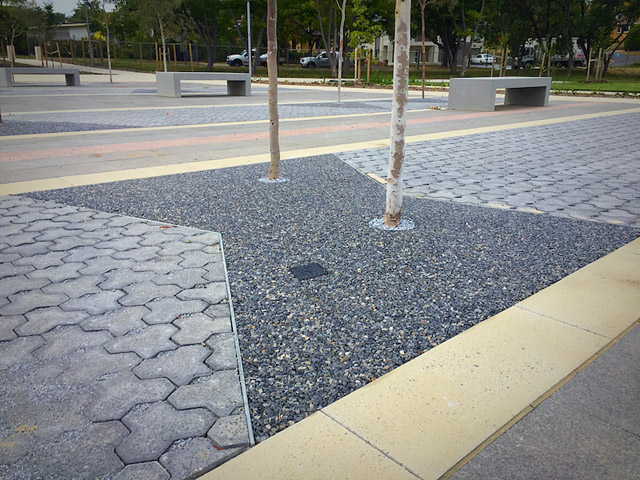TREE PIT TALK
01 Jun 2016
Opinions differ regarding the best specs for porous tree pit paving, and site requirements often call for an individual case assessment to achieve the best result. Some common considerations include…

While discussions regarding specifications for tree pit paving vary, there is no single specification or product mix that solves all scenarios when it comes to the best way to pave tree pits. A case-by-case consideration is often required to achieve a stable, durable and long-term result.




A porous paving product such as StoneSet is a flexible product that covers a range of installation considerations. Some of the most common considerations include:
NEW URBAN TREE INSTALLATIONS
Urban tree installations are typically found on pathways or roadsides, in city centres and in shopping areas. Because Councils recognise the environmental and social benefits of trees in these spaces they are found on nearly every city shopping street.
The main issue associated with this type of tree installation is that the new soil around the tree has no time to settle before a structural base mix is applied, causing sinkage. Compacting is often difficult because of area restriction (typically size is 1.2m x 1.2m) and protection of the new tree must be considered when installing tree pits.
To avoid tree pit sinkage StoneSet recommends that the pit be filled with porous paving to the top and allowed to settle naturally over the course of a few months. During this time hand compaction should be done a few times and the pit topped up with loose aggregate to minimise trip hazards.
Once the area has settled, the top layer of loose stones (30-40mm) can be removed and a porous paving material applied to seal and complete the pit. While it is not always feasible for regular hand compacting to be done during this time, it is a good idea to incorporate a repeat visit into the budget so an additional top layer of porous paving can be applied in the event of sinkage. This will ensure the pit is completed properly and safe for long-term use.
EXISTING URBAN TREE SURROUNDS
Installing new porous paving over an established tree usually requires removing 30-40mm of the top layer and replacing it with the new paving mix. Tree roots can be an issue, so StoneSet suggest leaving a small gap next to the trunk (approx 50mm) and tree roots (approx 20mm) to provide a barrier against potential root movement and tree growth. It also prevents trip hazards.
TREE COLLARS
The installation of a tree collar is ideal for the protection of new or young trees. Tree collars can be used with a porous paving mix and easily removed at a later date or left in place as required. StoneSet recommends the installation of a 200mm diameter metal ring tree collar, which can be back filled with loose stone after installation of the porous paving in order to discourage the accumulation of litter.
STONE VS RUBBER
Stone offers a strong, solid finish that performs as a pathway in the same way the surrounding concrete, blocks or asphalt will. For longevity it relies on good compaction of base, and minimal root and tree trunk disruption. StoneSet generally recommends the incorporation of rubber within the stone mix if roots are prominent or cracking has been an issue previously. The blend is recommended because rubber has two main flaws as a solo product for tree surround paving.
Unlike solid stone, rubber granules are susceptible to shrinkage. This can lead to gaps appearing around the edge of the tree pit and ultimately result in lifting of the surface.
The second concern is the issue of porosity. Rubber granules are generally used in a 4mm size for tree pits, which leaves very small voids for water penetration. It also leaves a finish with greater surface tension the needs to be broken each time it starts to rain, to allow the water to flow through. This means the root ball won’t receive as much water with an all rubber finish. The tree will then be more likely to go looking for water, leading to root movement and the potential for surface movement or cracking.
Rubber granules are a great addition to many scenarios but need to be used within a mix of stone to create a hardwearing, stable surface and maximise void content.
TREE TRENCHES
Tree trench is a term used to describe large areas, trafficable by foot, which sit between trees. For instance, a nature strip could be considered a tree trench.
With tree trenches the higher than normal volume of traffic using the areas between the trees needs to be considered. All preparation and consideration around the tree is the same as a normal tree pit, however the area away from the tree trunk needs to be treated as a regular footpath. This means gaining compaction to match required specification for use, and if compaction is an issue, the use of a recycled plastic cellular system to give base stability and load bearing capability without risk of sinkage may be required.
PARTICLE SIZE
There are two main considerations when deciding on particle size – expected traffic and porosity required.
Large tree surrounds have a good catchment area so a smaller stone can be used - StoneSet recommend no smaller than 6mm. Small tree pits will generally receive less foot traffic but require a higher void content to maximise water penetration. A 10mm stone is recommended in this case.
With 20 years of experience in the market, StoneSet has worked with a lot of engineers, architects, landscapers, and arborists to build a proven method for catering to a range tree pit installation considerations. By looking at each individual project based on its own merits, StoneSet can customise a porous paving solution and product mix that will suit the site requirements.
*Information supplied by StoneSet www.StoneSet.com.au







